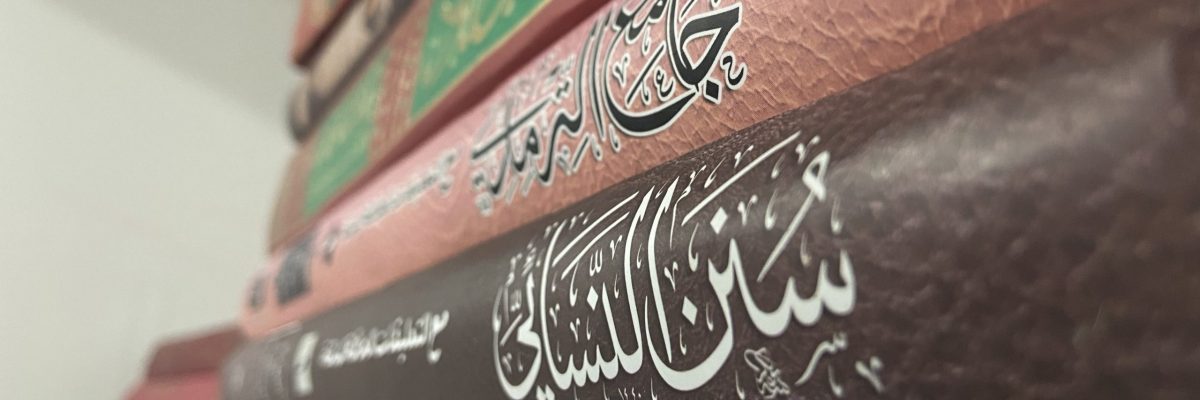Fatwa ID: 01609
Answered by Mufti Mohammed Tosir Miah
Question:
How was the Qur’an compiled
Answer:
In the name of Allah, the most Beneficent, the most Merciful.
After the Prophet of Allah  death, Saaiduna Abu Bakr
death, Saaiduna Abu Bakr  became the first Caliph of Islam. During his time there was the Battle of Yamamah between the Muslims and the false imposter, Musailamah, who claimed to be a Prophet. Even though the Muslims were victorious, a large number of huffaz (those who have memorized the Holy Quran) were martyred in this battle. Saaiduna Umar Bin Khattab
became the first Caliph of Islam. During his time there was the Battle of Yamamah between the Muslims and the false imposter, Musailamah, who claimed to be a Prophet. Even though the Muslims were victorious, a large number of huffaz (those who have memorized the Holy Quran) were martyred in this battle. Saaiduna Umar Bin Khattab  was alarmed by this and concerned that the next generation may not have enough teachers of the Holy Qur’an. He, therefore, approached Saaiduna Abu Bakr
was alarmed by this and concerned that the next generation may not have enough teachers of the Holy Qur’an. He, therefore, approached Saaiduna Abu Bakr  and suggested that a formal compilation of the Qur’an be prepared on materials that would be convenient to store, maintained, and used as a reference. Saaiduna Abu Bakr
and suggested that a formal compilation of the Qur’an be prepared on materials that would be convenient to store, maintained, and used as a reference. Saaiduna Abu Bakr  was reluctant to do some thing the Prophet of Allah
was reluctant to do some thing the Prophet of Allah  himself had not undertaken. After a few days, he designated Saaiduna Zaid Bin Thabit
himself had not undertaken. After a few days, he designated Saaiduna Zaid Bin Thabit  to undertake this task. A committee was formed to do the job. They compiled a collection by checking and double checking each Ayah of the existing record of the Qur’an with the memories of each member of the committee as well as of the other prominent experts.
to undertake this task. A committee was formed to do the job. They compiled a collection by checking and double checking each Ayah of the existing record of the Qur’an with the memories of each member of the committee as well as of the other prominent experts.
During Saaiduna Uthman Bin Affan  ’s Khilafat the Muslim population had spread over vast areas out side the core Arab regions and many people of other cultures were entering Islam. About 15 years after the first compilation, therefore, it was suggested that authenticated copies of the Qur’an be made available to those areas. Saaiduna Zaid
’s Khilafat the Muslim population had spread over vast areas out side the core Arab regions and many people of other cultures were entering Islam. About 15 years after the first compilation, therefore, it was suggested that authenticated copies of the Qur’an be made available to those areas. Saaiduna Zaid  again was instructed to undertake the task. He again formed a committee. Instead of just making copies of the existing text, they decided to seek corroboration of each Ayah in the earlier compilation with at least two other written records in the private copies in the possession of known reputable individuals. These authentic copies of the Qur’an are known as the “`Uthmani” text. This text, however, did not have the short vowels that are even today left out of Arabic text used by those who know the language. In the absence of these short vowels, however, those not well versed in the language can make serious mistakes. These vowels were, therefore, inserted about 60 years later under instructions of the governor of Kufa, named Hajjaj Ibn Yusuf. (Maariful Qur’an p.22 – p.31 v.1)
again was instructed to undertake the task. He again formed a committee. Instead of just making copies of the existing text, they decided to seek corroboration of each Ayah in the earlier compilation with at least two other written records in the private copies in the possession of known reputable individuals. These authentic copies of the Qur’an are known as the “`Uthmani” text. This text, however, did not have the short vowels that are even today left out of Arabic text used by those who know the language. In the absence of these short vowels, however, those not well versed in the language can make serious mistakes. These vowels were, therefore, inserted about 60 years later under instructions of the governor of Kufa, named Hajjaj Ibn Yusuf. (Maariful Qur’an p.22 – p.31 v.1)
Only Allah Knows Best
Mohammed Tosir Miah
Darul Ifta Birmingham


